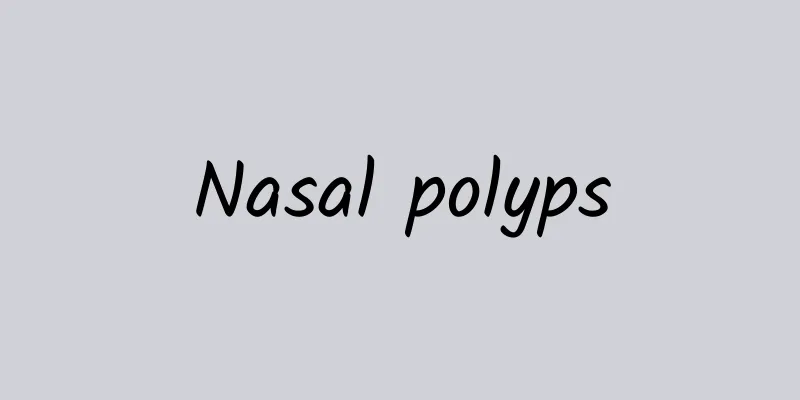Chest pain when swallowing

|
When there is something wrong with the body, even eating becomes a burden. Many people feel chest pain when swallowing and don’t know what causes it. The feeling of chest pain may just be a feeling. It may be caused by a stomach disease that prevents food from being digested. In addition, we should also pay attention to reflux esophagitis, which is caused by bacterial infection and can cause pain when eating. Reflux esophagitis (RE) is an inflammatory lesion of the esophagus caused by the reflux of gastric and duodenal contents into the esophagus. Endoscopic manifestations include damage to the esophageal mucosa, namely esophageal erosion and/or esophageal ulcer. Causes 1. Destruction of the anti-reflux barrier The lower esophageal sphincter (LES) is a high-pressure area 3 to 5 cm above the junction of the esophagus and stomach. The resting pressure here is 15 to 30 mmHg, forming a pressure barrier that plays a physiological role in preventing gastric contents from flowing back into the esophagus. In normal people, increased intra-abdominal pressure can cause a LES contraction reflex through the vagus nerve, causing the LES pressure to increase exponentially to prevent GER. GER may result when LES pressure is too low and increased intra-abdominal pressure fails to induce a strong LES contraction response. Cholinesterase and β-adrenergic agonists, α-adrenergic antagonists, dopamine, diazepam, calcium receptor antagonists, morphine, as well as fat, alcohol, caffeine, smoking and other food factors can affect LES function and induce GER. In addition, during pregnancy, oral contraceptives containing progesterone, and late menstrual cycle, plasma progesterone levels increase, and the incidence of GER also increases accordingly. 2. Impairment of esophageal acid clearance Normal esophageal acid clearance function includes two parts: esophageal emptying and saliva neutralization. When acidic gastric contents reflux, only 1 to 2 secondary esophageal peristalsis (10 to 15 seconds) are needed to empty almost all of the refluxed materials. The small amount of acid remaining in the esophageal mucosal lacuna can be neutralized by saliva (a normal person produces 1000 to 1500 ml of saliva with a pH of 6 to 8 per hour through the esophagus into the stomach). The function of esophageal acid clearance is to reduce the time that the esophageal mucosa is immersed in gastric acid, thus preventing reflux esophagitis. During sleep at night, saliva secretion almost stops, and secondary esophageal peristalsis rarely occurs. Esophageal acid clearance is significantly delayed at night, so the harm of nocturnal GER is more serious. 3. Damage to the anti-reflux barrier function of the esophageal mucosa When the defense barrier is damaged, esophagitis may occur even under normal reflux conditions. Studies have found that the weakening of esophageal epithelial cell proliferation and repair ability is one of the important causes of reflux esophagitis. 4. Gastroduodenal dysfunction (1) Abnormal gastric emptying. (2) Gastroduodenal reflux: When the pyloric sphincter tension and LES pressure are simultaneously reduced, hydrochloric acid and pepsin in gastric juice, bile acid, pancreatic juice and lysophosphatidylcholine in duodenal juice can all simultaneously reflux into the esophagus, eroding the keratinized layer of esophageal epithelial cells and causing it to become thinner or fall off. The H+ and pepsin in the reflux pass through the newly formed squamous epithelial cell layer and penetrate into the esophageal tissue, causing esophagitis. 5. Hiatal Hernia A sliding hernia is common. The esophageal gastric junction moves upward with the gastric body into the thoracic cavity. The rise of the stomach causes the diaphragmatic crus to separate and the hiatus to widen. When the hernia sac is small, it slides up and down with body position, force and coughing. As the hernia sac enlarges, it no longer slides, changing the normal anatomical relationship near the hiatus and causing incomplete closure of the esophageal-gastric junction. The herniation of the stomach causes the His angle where the esophagus enters the stomach to disappear, the diaphragmatic esophageal membrane to be stretched and thinned, and the abdominal esophagus to move upward, further deteriorating the closure function of the joint. More than half of patients with hiatal hernia develop reflux esophagitis. 6. Vomiting during pregnancy Hiatal hernia, which occurs because pregnancy increases intra-abdominal pressure, can cause reflux esophagitis, but it can be resolved after delivery without any treatment. Vomiting and long-term hiccups can also cause the cardia to open frequently and cause reflux esophagitis, which can return to normal after the cause is eliminated. 7. Other diseases Newborns and infants may experience reflux during their development due to poor function of the lower esophageal sphincter, but most of the symptoms can be alleviated as the children grow. Reflux esophagitis can be caused by primary lower esophageal sphincter dysfunction resulting in incomplete closure, as well as organic diseases such as tumors in the lower esophagus and cardia, scleroderma, and various causes of pyloric obstruction. Therefore, reflux esophagitis is usually the result of the combined effects of refluxed bile and gastric acid on the esophageal mucosa. Before bile causes esophageal damage, pyloric and LES dysfunction must first exist; reflux esophagitis is often accompanied by gastritis. Sliding hiatal hernia is prone to complications of this disease because it often causes LES and pyloric dysfunction; duodenal ulcers are often accompanied by high gastric acid secretion, which can easily lead to antral spasm and pyloric dysfunction, so this disease is also more common. Obesity, large amounts of abdominal effusion, late pregnancy, increased intragastric pressure, tobacco, alcohol, and medication can all trigger the disease. Clinical manifestations 1. There is no correlation between the severity of esophagitis and reflux symptoms. Patients with reflux esophagitis show typical symptoms of gastroesophageal reflux, but may also have no reflux symptoms and only show symptoms of indigestion such as upper abdominal pain and discomfort. The clinical manifestations of patients with severe esophagitis are not necessarily serious. 2. Typical symptoms include a burning sensation behind the sternum (heartburn), regurgitation and chest pain. Heartburn refers to a burning sensation behind the sternum radiating to the neck, and regurgitation refers to the reflux of gastric contents into the pharynx or mouth. Reflux symptoms often occur after a full meal, and severe reflux at night affects the patient's sleep. 3. In the later stages of the disease, the esophagus becomes narrow due to scarring, and the burning sensation and burning pain gradually subside, but permanent difficulty in swallowing occurs, which may cause a feeling of blockage or pain when eating solid food. 4. Severe esophagitis may cause erosion of the esophageal mucosa and bleeding, which is mostly chronic and small-scale bleeding. Prolonged or heavy bleeding can lead to iron deficiency anemia. |
<<: Man's stomach and chest are cold
Recommend
Can I drink yogurt after surgery?
Patients can drink yogurt appropriately after sur...
Iranian saffron efficacy and contraindications
People in China may not know that in Saudi Arabia...
What are the benefits of blind massage?
Massage is a traditional Chinese medicine health-...
Anemia diet for 11-month-old babies
If an 11-month-old baby suffers from anemia, it w...
Can lying in bed make the gestational sac grow upwards?
If the gestational sac is relatively low, this ma...
The best Chinese herbal medicine for lowering uric acid
High uric acid levels often cause symptoms of gou...
What is the reason for frequent fetal movements at 26 weeks?
First-time mothers will feel fetal movements betw...
There is a line above and below the belly button
The human belly button is very important, and if ...
Causes of sagging skin all over the body
There are many reasons for sagging skin all over ...
Under what circumstances should Danshen dripping pills be taken?
As a person gets older, the probability of develo...
The secret of scraping face slimming method: scrape away fat and give you a small V-face
I believe many people have the experience of scra...
What causes girls' menstruation to come early?
For girls, if menstruation comes early, they shou...
How much blood is drawn for liver function test
Before we go to a new school or enter a new unit,...
My eyes itch as if bugs are crawling in them
Sometimes my eyes feel dry and itchy, and I alway...
Symptoms of irregular heartbeat
Many people are told that they have irregular hea...









